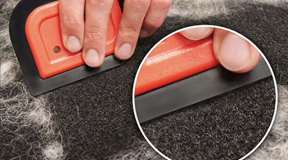Designed with attention to detail, the car polisher is among the best car buffers for home and commercial use. For a long number of years even the idea of washing and waxing our car was unnecessary. Cleanup meant maybe a hosing off, and adding another layer of rattle can primer to key spots. The first paint job worthy of a wash and wax was a defining moment. Washing and waxing the new paint on the old car was suddenly an exciting novelty! For somewhat newer cars, a regular wash and wax keeps the paint from decaying to the clean it with scrub pad and can of spray paint stage. Sure the local car wash is great, but nothing beats the satisfaction washing and waxing your own ride. Carnauba wax is used in blends alongside other thickening ingredients, such as cocoa butter, to add hardness to the texture of a product.
Space Age Polymers
The thin layer of space age polymers that comprises modern automobile paint makes the difference between a car that’s worth washing and waxing, and that chalk blue Gremlin that Uncle Vito drove around. The paint needs to stay strong enough to protect the steel underneath, yet flexible enough as not to dry out and lose its strength. Nothing beats up on paint like the relentless forces of sun and weather. Once the materials that keep the paint tough yet flexible get baked dry by the sun or wicked away by the rain, bad things start to happen.
Snake Oil
Cleaning first is the key to waxing later. A properly applied coat of protective wax acts as both a sealant to keep the good stuff inside your paint, and a shield to keep the bad stuff out. Which wax to use is open to freedom of choice. As we tend to stick with the classics a good old Carnauba paste or liquid is on the shelf. Others will rant on about the miracle of modern science and synthetic formulas. As with most things, if it sounds too good to be true it likely is. Quality is more important than type, and any protection is better than none at all.
Stuff You’ll Need:
· Cool Shady Spot
· Water and Hose with Spray Nozzle
· Bucket of Soapy Water
· Clean Soft Towels of Some Kind
· Super Squeegee
· Top Quality Wax
· More Clean Soft Towels
Rinse it. Park the vehicle in some shade and hose it down from top to bottom with cool, clean water. Hose down that stinky dog if so equipped. Also spray any nearby cats.
Make soapy water. Use a quality soap made specifically for washing automobiles. Dish soap and the like will dry out automotive paint.
Wash it. Use plenty of soapy water and soft clean towels or sponges to wash away dirt and grime. Making waxy scratches in the paint by pushing dirt around is not the desired result.
Rinse it down again. Work from top to bottom to remove detergent. This time say goodbye to dirt and crud.
Dry it. One of the better sawbucks ever spent was on one of these silicone blade squeegee gizmos. Finish drying with soft terrycloth towels or chamois. These microfiber towels work swell too. If a compressor sits in the garage fire it up and use compressed air blow water out of crevices.
Wax on! Apply a thin coat of wax in a circular pattern to a small area at a time. Be careful not to get wax on trim bits or lodged in cracks. Work in the shade. NEVER apply wax in direct sunlight or attempt to apply wax to a hot painted surface. The wax can bake on and become wicked hard to remove.
Wax off! First let the wax to haze over and dry. Next use clean, soft cloths to remove wax. Rotate the cloth surface and shake out any excess wax and as you go. Tip: tear those corner labels off cloths to prevent making scratches.
All manner of modern machines and miracle products are available for the task of washing and waxing. The safest and gentlest on paint method is a good old hand wax. Buffers and polishers can do the job but can also cause damage.




